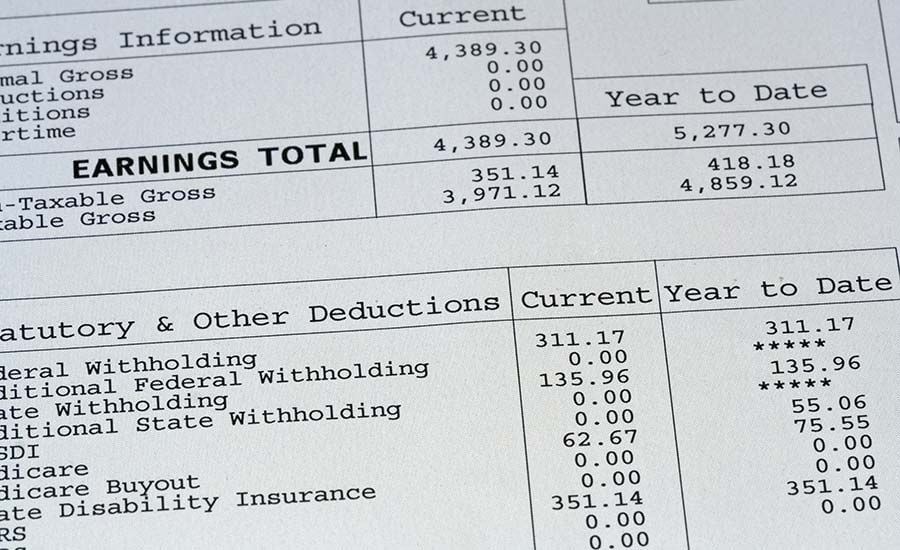You check the net pay, shrug, and swipe away.
But those tiny abbreviations on your pay stub? That’s where real money can leak out through errors or mismatches.
One missed mistake can add up to hundreds—sometimes thousands—over a year. Let’s translate the jargon so you can spot issues fast and keep more of what you earn.
How Pay Stub Deductions Work
Every paycheck starts with gross pay (your total earnings for the period) and ends with net pay (what hits your account). Between those two numbers, your employer and payroll system apply deductions:
Required taxes (federal, Social Security, Medicare, and often state/local)
Benefits and savings (health insurance, retirement contributions, HSAs/FSAs)
Other items (union dues, wage garnishments, charitable donations)
Each deduction typically appears with a short code. These codes aren’t standardized across all employers, which is why they can feel cryptic.
Pretax vs Post-Tax: Why It Matters
Pretax deductions lower your taxable income first (e.g., traditional 401(k), many health insurance premiums, HSA/FSA). Result: you may pay less in income tax now.
Post-tax deductions come out after taxes (e.g., Roth 401(k), some voluntary benefits, garnishments). Result: no immediate tax reduction.
Understanding which bucket a deduction falls into helps you verify totals and avoid surprises at tax time.
Common Pay Stub Codes (Plain-English Guide)
Note: Your employer may use variations (e.g., “FIT” vs “FED TAX”).
Taxes
FIT / FED / FED TAX — Federal income tax withheld
SIT / STATE / STATE TX — State income tax withheld (if applicable)
LIT / LOCAL / CTY / MUNI — Local/city taxes (if applicable)
FICA — Social Security + Medicare umbrella term
SS / OASDI — Social Security tax withheld
MED / MEDICARE — Medicare tax withheld
Benefits & Savings
401K / 403B / 457 — Retirement plan contributions (often pretax)
ROTH 401K — After-tax retirement contribution
HSA — Health Savings Account contribution (pretax)
FSA / HC FSA / DC FSA — Flexible Spending Accounts (health or dependent care)
MED / MED INS / HLTH — Medical insurance premium
DENT / DENTAL — Dental insurance premium
VIS / VISION — Vision insurance premium
LIFE — Life insurance premium
STD / LTD — Short-term / Long-term disability premium
Other Common Items
GARN / GARNISH — Court-ordered wage garnishment
UNION / DUES — Union dues
CHAR / GIVE — Charitable contributions via payroll
PTO / VAC / SICK — Accrued/used paid time off (not a deduction, but appears alongside earnings)
Key Labels
GROSS — Pay before any deductions
NET — Take-home pay after deductions
YTD — Year-to-date totals for each item
PERIOD / PAY PERIOD — The date range this paycheck covers
YTD Boxes: Your Built-In Audit Trail
Every pay stub should show YTD (year-to-date) numbers for earnings, taxes, and deductions. These totals help you:
Confirm that taxes withheld to date make sense for your pay and W-4 elections
Check retirement/benefit contributions against your goals or plan limits
Spot anomalies when a code suddenly spikes compared to prior pay periods
If something looks off, compare this period vs YTD. A sudden jump can reveal a one-time correction or a persistent error.
Quick Check: 5-Minute Pay Stub Audit
Match the basics: Confirm hours × rate (or salary ÷ pay periods) equals gross pay.
Scan taxes: Ensure FIT, SS/OASDI, and MED are present and plausible. (SS usually 6.2% up to the annual wage base; Medicare 1.45% with potential surtax for high earners.)
Spot pretax savings: Verify your 401k/HSA/FSA amounts and YTD totals.
Benefits sanity check: Medical/dental/vision premiums should be consistent unless you changed plans.
Compare YTD: Look for unexplained jumps in any single code; review last pay stub for changes


